Home Improvement
The Advantages and Disadvantages of Installing a Motorized TV Lift in Your Home
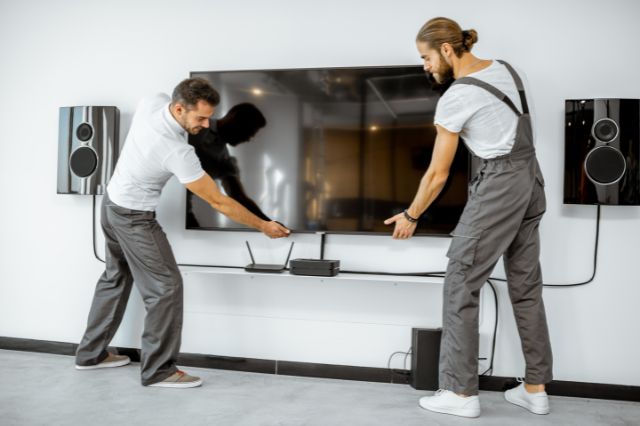
In recent years, home automation has become increasingly popular, and one of the latest trends in this field is motorized TV lifts. This special mechanism is designed to hide your LED screen when it’s not in use, so it won’t take up any unnecessary space in your living room or bedroom. The construction can provide more free space in your dwelling, and protect your expensive television if, for example, your kids are too active or you just do not want to draw attention to this device.
To find the most popular types of automated television lifts, and see how they can be installed in your home, follow this page https://www.progressiveautomations.ca/pages/motorized-tv-lifts and enjoy the options. In this article, we’ll explore the advantages and disadvantages of installing a motorized TV lift in your home.
Discover a New Trend of Home Automation in the Form of a Motorized Lift for Your LED TV
According to a recent report by Grand View Research, the global market for motorized TV lifts is projected to reach USD 491.9 million by 2027, growing at a CAGR of 7.1% from 2020 to 2027. This growth can be attributed to factors such as the increasing demand for home automation systems, rising disposable incomes, and the need for space-saving solutions in smaller homes and apartments.
One emerging trend in this space is the installation of motorized TV lifts, which provide a stylish and practical solution for managing your television. A motorized TV lift not only adds an element of luxury to your living space but also provides a practical solution to manage your TV. With the touch of a button, you can easily lower or raise your TV, allowing you to enjoy your favorite shows and movies from different angles and heights.
What Models of TV Elevators are Available for Installation
There are many different models of TV lifts available, each with its own set of features and benefits. Some are designed to be mounted on the ceiling, while others can be installed on a piece of furniture, such as a cabinet or a dresser. Some lifts can even swivel or tilt, giving you more control over the viewing angle of your TV.
If you’re considering a motorized TV lift, it’s important to choose the right model for your needs. Factors to consider include the size and weight of your TV, the height of your ceiling or furniture, and the amount of space you have available. You’ll also want to consider the features of the lift, such as the speed of the motor and the level of noise it produces.
Is It Difficult to Implement DIY Motorized TV Lift Project?
While some people choose to install their motorized TV lifts themselves, it’s important to note that this can be a challenging project. In order to ensure that the lift is safe and effective, it’s important to have a solid understanding of electronics, mechanics, and woodworking. If you’re not comfortable with these skills, it’s best to hire a professional to install your lift for you.
Key Pros and Cons of Setting Up an Automated Television Elevator
Now that we’ve discussed some of the basics of motorized TV lifts, let’s take a closer look at the advantages and disadvantages of installing one in your home.
Advantages:
- Space-saving: One of the biggest advantages of a motorized lift is that it allows you to reclaim space in your home. When your television is not in use, it can be hidden away in a cabinet or other piece of furniture, freeing up valuable floor and wall space. This is particularly useful for those living in smaller homes or apartments where space is at a premium.
- Enhanced viewing experience: Another advantage of an automated lift is that it can help enhance your viewing experience. With the ability to raise and lower your TV to different heights and angles, you can achieve the optimal viewing position for any occasion.
- Improved aesthetics: A motorized TV lift can also improve the overall aesthetics of your home. By keeping your LED screen out of sight when not in use, you can maintain a clean and uncluttered look in your living room or entertainment area.
- Convenience: The lifts can be controlled using a remote control, allowing you to easily raise or lower your TV without having to physically handle it. This can be particularly convenient for those with mobility issues or for families with young children.
Disadvantages:
Cost: One of the biggest disadvantages of a motorized TV lift is the cost. They can be quite expensive to install and may require professional installation, which can add to the overall cost.
Maintenance: Another potential downside is that automated television mechanisms may require regular maintenance to ensure they continue to function properly. This can include cleaning, lubricating, and inspecting the lift mechanism.
Limited compatibility: Motorized TV lifts may not be compatible with all types of TVs, particularly larger models or those with unusual shapes or dimensions. It’s important to ensure that your TV is compatible with the lift before making a purchase.
Noise: Some motorized television systems can be quite loud sometimes, but, to tell the truth, it directly depends on the manufacturer and the quality of the mechanism.
Overall, while automated elevators can offer unique space-saving benefits and added convenience, they may not be the best option for everyone. It’s important to carefully consider the potential advantages and disadvantages before investing in a TV lift system for your home.
Home Improvement
Transform Your Home with Contemporary Doors Interior: A Modern Aesthetic
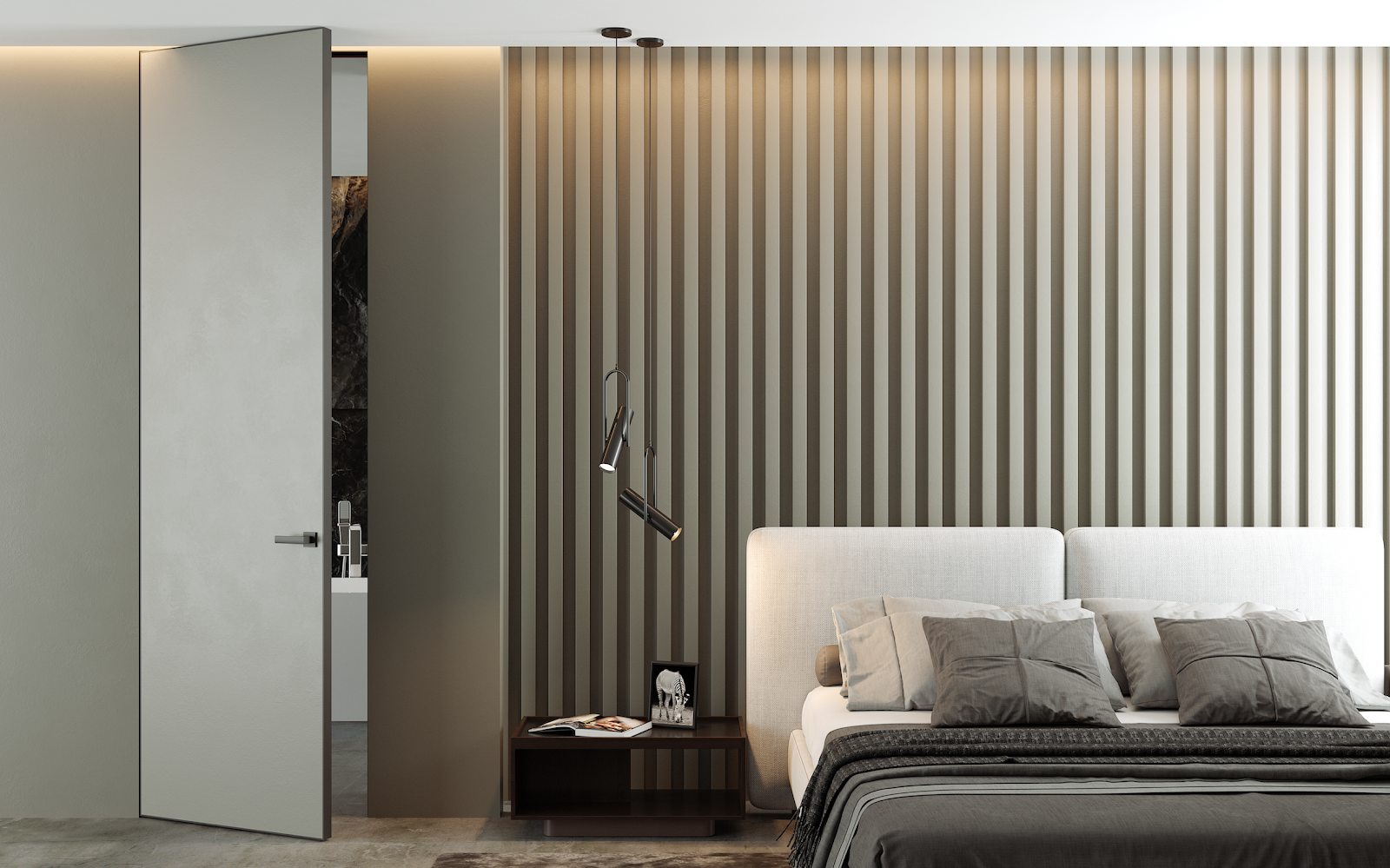

Choosing contemporary doors interior is a vital aspect of modern home design, offering both functionality and a stylish touch. These doors are more than just functional elements; they can significantly enhance the look and feel of your living spaces.
In this guide, we will explore different types of contemporary interior doors, their benefits, and what to consider when selecting the perfect doors for your home. We’ll also highlight TrioDoors door stores in Toronto, a leading provider of high-quality interior doors.
Exploring Types of Contemporary Interior Doors
Contemporary interior doors come in a wide range of styles and materials. Here’s a look at some of the most popular options:
- Panel Doors
- Modern Twist: Traditional panel doors updated with clean lines and modern materials.
- Variety of Configurations: Available in multiple panel configurations, such as two, four, or six panels.
- French Doors
- Elegance and Light: Glass panels allow for the flow of natural light, enhancing the sense of space.
- Contemporary Glass Options: Choose from frosted, tinted, or clear glass for a modern touch.
- Sliding Doors
- Space-Saving: Slide along a track, perfect for areas where space is limited.
- Modern Aesthetic: Commonly used in modern homes for closets, bathrooms, and as room dividers.
- Pocket Doors
- Hidden Design: Slide into the wall cavity, making them virtually invisible when open.
- Ideal for Small Spaces: Great for rooms where a swinging door would be impractical.
- Barn Doors
- Rustic Meets Modern: Mounted on a sliding track, combining rustic charm with contemporary design.
- Statement Piece: Acts as both a functional door and a focal point in any room.
Key considerations when choosing contemporary interior doors
- Material Selection
- Wood: Classic look, customizable with various finishes and stains.
- MDF (Medium-Density Fiberboard): Smooth, easy to paint, and more affordable than solid wood.
- Glass: Perfect for allowing light flow while maintaining a modern aesthetic.
- Metal: Durable, often used in industrial or modern designs.
- Style and Design
- Consistency: Ensure the door style matches your home’s overall design theme.
- Functional Needs: Consider the specific purpose and requirements for each door.
- Size and Measurements
- Standard vs. Custom Sizes: While most doors come in standard sizes, custom options are available for unique spaces.
- Accurate Measurements: Proper measurement of the door frame is crucial to avoid fitting issues.
- Hardware and Accessories
- Handles and Knobs: Choose hardware that complements the door style and home decor.
- Hinges and Tracks: Ensure hardware is durable and functional for the chosen door type.
- Installation
- Professional Installation: For best results, consider professional installation.
- DIY-Friendly Options: Some doors are designed for easy DIY installation.
Selecting the right contemporary doors interior is essential for achieving both functionality and a modern aesthetic in your home. From sleek flush doors to elegant French doors, the choices are vast and varied. When choosing interior doors, consider factors such as material, style, size, and installation requirements to ensure they meet your needs.
For quality and reliability, purchase your contemporary interior doors (https://triodoors.ca/interior-doors/) from reputable suppliers like TrioDoors door stores in Toronto. It offers a wide selection of high-quality doors that cater to various styles and budgets, ensuring you find the perfect doors for your home.
Enhance your living space today with the ideal contemporary doors interior!
Home Improvement
Best Place to Buy California Shutters in Toronto and Things to Know
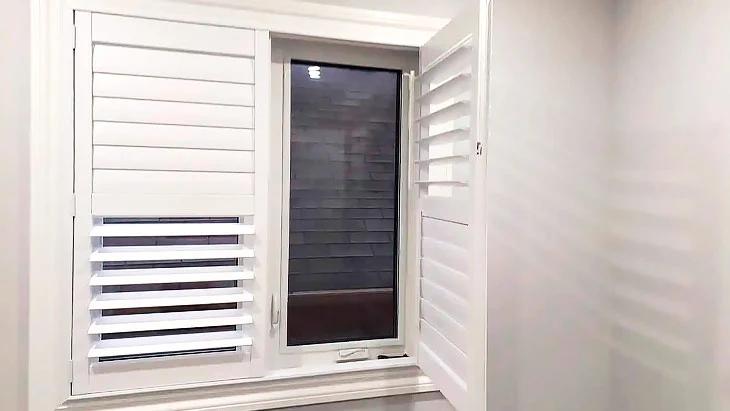

In Toronto with its population density, a large number of residents do care about privacy. This is why Vinyl Light gets lots of requests for California shutters Toronto area.
What Are California Shutters
California shutters are a form of interior window covering that is usually made of wood or composite materials. They are sometimes referred to as plantation shutters or just shutters. To adjust light and privacy, they have large slats that may be tilted open or closed.
These shutters, which are installed inside window frames, are renowned for their strength, beauty, and capacity to improve sound absorption and insulation in a space. They give windows in homes and businesses a traditional, refined appearance, and they are well-liked for their timeless design and usefulness.
Features of California Shutters
California shutters’ primary advantages are:
- Beauty. They provide any area with a classic, ageless look that enhances its overall charm.
- Light control. California shutters let you control the amount of natural light that enters your room, giving you freedom and ambiance.
- Privacy. Because they offer such remarkable solitude, they are ideal for baths and bedrooms.
- Energy efficient. By keeping your home warm in the winter and cool in the summer, the insulation they offer may help you save money on your energy bills.
- Resilience. California shutters are robust and durable.
- Easy maintenance. They are easy to maintain, requiring only the occasional wipe down with a damp cloth.
- Increase the value of your property. Installing California shutters could increase the value of your home because many purchasers believe them to be a desired feature.
California vs. Plantation Shutters
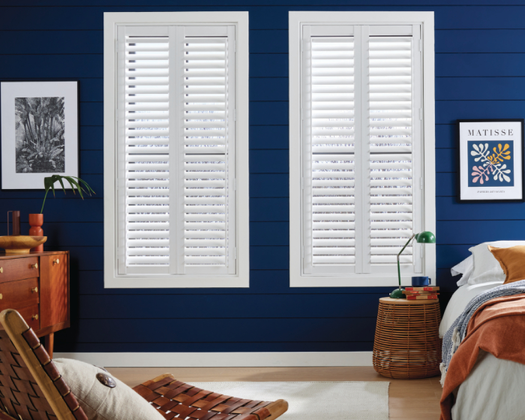

Depending on your unique requirements, tastes, and the design of your house, you can choose between plantation and California shutters.
- Window size. California shutters may look more proportionate on smaller windows and larger windows. Plantation shutters can improve the appearance of larger windows.
- Room style. Take into account the room’s general design and aesthetic. Plantation shutters complement modern or contemporary decor, while California shutters work well with traditional décor.
- Budget. Since plantation shutters may cost more, it may be a determining factor.
- Needs for light and privacy. Consider the degree of light and privacy control that you require. Both types of shutters offer good privacy.
Home Improvement
Troubleshooting and Repair Guide for a Noisy Washing Machine
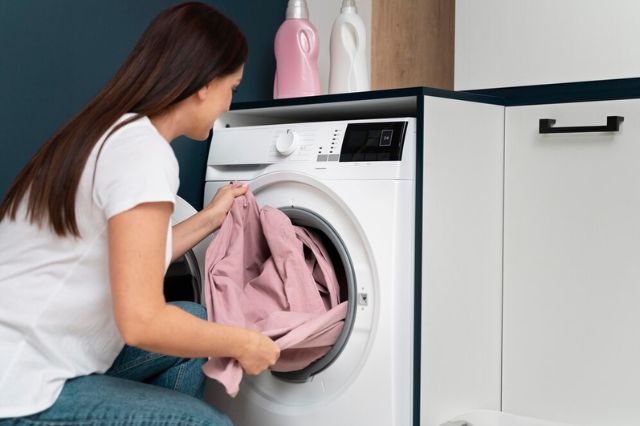

Washing machine repair is a crucial skill for homeowners seeking to maintain the functionality of their household appliances. One common issue that plagues many households is a noisy washing machine.
The incessant clunks, bangs, or rattles emanating from the appliance can be both annoying and indicative of underlying problems. Luckily, resolving the noise problem typically requires simple repairs achievable with basic tools and some basic knowledge.
This thorough guide will guide you through a systematic troubleshooting and Whirlpool washing machine repair process, guaranteeing your washing machine operates smoothly and silently for an extended period.
Understanding the Source of the Noise
Prior to delving into the repair procedures, it is crucial to pinpoint the origin of the noise. Various factors, including loose components, worn-out parts, or incorrect installation, can contribute to the noises emanating from washing machines.
Take the time to carefully listen to the machine during different stages of the washing cycle, noting when the noise occurs and any specific patterns. This initial assessment will help you pinpoint the root cause, making the repair process more efficient.
Step 1: Inspecting for Loose Items
Begin the troubleshooting process by checking for loose items inside the washing machine drum. Coins, buttons, or small objects may have become lodged in the drum’s crevices, causing unusual noises during the spin cycle. Carefully inspect the drum, removing any foreign objects that may be contributing to the racket.
Step 2: Tightening Loose Fasteners
Noisy washing machines often result from loose nuts, bolts, or screws. Employ a wrench or screwdriver to secure any apparent fasteners on the machine, with specific attention to areas like the drum, motor, and support brackets. Ensure all components are securely fastened to eliminate unnecessary vibrations and noises during operation.
Step 3: Checking for Damaged Drum Bearings
Worn-out drum bearings are a common culprit for persistent washing machine noise. To inspect the bearings, manually rotate the drum to feel for any roughness or resistance. If the bearings are damaged, they may need replacement. We will lead you through the steps to safely remove and replace these essential components.
Step 4: Balancing the Washing Machine
Uneven distribution of the load can result in excessive noise and vibration. Verify whether the load is evenly distributed within the drum. If not, redistribute the clothes to achieve a balanced load. Additionally, ensure that the washing machine is level on the floor. Adjust the leveling legs as needed to eliminate any rocking or tilting during operation.
Step 5: Examining the Drive Belt
A loose or damaged drive belt can contribute to a noisy washing machine. Examine the belt closely for any indications of wear, cracks, or looseness. If any issues are detected, follow our guide to safely replace the drive belt, ensuring smooth and quiet operation.
Step 6: Lubricating Moving Parts
Proper lubrication is essential for reducing friction and minimizing noise in moving parts. Apply a suitable lubricant to components such as the motor bearings and pulleys. This simple step can make a significant difference in the overall noise level of your washing machine.
Step 7: Evaluating the Shock Absorbers
Washing machines are equipped with shock absorbers to dampen vibrations during the spin cycle. Inspect these elements for any visible signs of wear or damage. If necessary, replace the shock absorbers to restore their effectiveness in reducing noise and vibration.
Safety Precautions
- Turning Off Power and Water Supply Before Any Repair:
- Power Supply: Disconnect the washing machine from the electrical outlet to prevent the risk of electric shock during repairs.
- Water Supply: Shut off both the hot and cold water supplies connected to the washing machine to prevent potential water leakage during maintenance.
- Handling Washing Machine Components with Care During Troubleshooting:
- Caution with Moving Parts: Exercise caution when manually rotating the drum or handling moving components to prevent injuries.
- Wear Protective Gear: Depending on the nature of the repair, it is advisable to wear suitable protective gear, such as gloves or safety glasses.
- Secure the Machine: If required to tilt or move the washing machine, ensure it is properly secured to prevent tipping or falling.
- Follow Manufacturer Guidelines: Adhere to the guidelines and instructions provided by the manufacturer for the safe troubleshooting and repair processes.
By incorporating these regular maintenance practices and adhering to safety precautions, you can not only address existing noise issues but also prevent future problems, ensuring the longevity and efficient performance of your washing machine.
Regular Maintenance Practices
- Tips for Preventing Future Noise Issues:
- Load Balance: Ensure that the laundry load is consistently distributed within the drum, preventing imbalance during the spin cycle.
- Check Pockets: Before loading clothes, ensure there are no loose items such as coins, buttons, or small objects that could cause noise.
- Proper Installation: Make sure the washing machine is leveled and stable on the floor, minimizing vibrations during operation.
- Use the Right Detergent: Follow the manufacturer’s recommendations for the type and amount of detergent to prevent excessive suds that may contribute to noise.
- Inspect Hoses: Regularly examine both the water inlet and drain hoses for any kinks, leaks, or damage that could result in noise or operational problems.
- Cleaning and Maintaining the Washing Machine for Optimal Performance:
Routine cleaning is vital to prevent the accumulation of dirt, debris, and detergent residues, which can impact the performance of your washing machine. Consult the table below for a detailed guide on cleaning and maintaining various parts of the washing machine:
| Component | Cleaning Procedure | Frequency |
| Detergent Drawer | Remove and clean the detergent drawer. | Monthly |
| Door Seal | Use a damp cloth to wipe the door seal, eliminating dirt and mold. | Monthly |
| Drum | Initiate a hot water cycle with vinegar to effectively eliminate any residue buildup. | Every 2-3 months |
| Filter/Pump | Clean the filter or pump to remove lint and debris. | Every 3-6 months |
| Exterior | Wipe down the exterior with a mild detergent solution. | As needed |
Successfully repairing a noisy washing machine involves a systematic approach to identify and address the root cause of the issue. By adhering to these detailed instructions, you can rejuvenate your washing machine, restoring it to optimal performance.
This process will effectively eliminate disruptive noises, ensuring the longevity of your appliance. Regular maintenance and timely repairs will not only enhance the efficiency of your washing machine but also contribute to a quieter and more peaceful laundry experience.
-



 Captions3 years ago
Captions3 years ago341 Sexy Captions to Fire Up Your Instagram Pictures
-



 Captions3 years ago
Captions3 years ago311 Night Out Captions for Instagram and Your Crazy Night
-



 Captions3 years ago
Captions3 years ago245 Saree Captions for Instagram to Boost Your Selfies in Saree
-



 Captions3 years ago
Captions3 years ago256 Best Ethnic Wear Captions for Instagram on Traditional Dress
-



 Captions3 years ago
Captions3 years ago230 Blurred Picture Captions for Instagram
-



 Captions3 years ago
Captions3 years ago275 Deep Captions for Instagram to Express Your Thoughts
-



 Quotes3 years ago
Quotes3 years ago222 Nail Captions for Instagram to Showcase Your Fresh Manicure
-



 Captions3 years ago
Captions3 years ago211 Laughing Captions for Instagram | Laughter Is the Best Medicine







